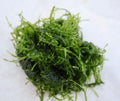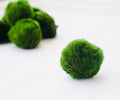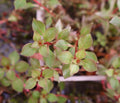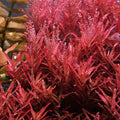Cleaning Fish Tanks 101
As a beginner or someone who has tried and given up on fishkeeping, learning how to keep fish tanks clean longer can boost your confidence and allow you to fully enjoy the activity!
When the water becomes hazy, algae and dirt buildups are at an all-time high, and, worst-case scenario, fish begin to die, it's easy to get disheartened.
The most exciting aspects of entering the fishkeeping hobby are setting up your tank, diving headfirst into aquascaping, and introducing fish. However, being an aquarist entails a certain amount of responsibility.
Because an aquarium is a closed environment, anytime anything goes wrong (water quality declines, illness hits, etc.), you must move fast to correct the issue.
Keeping up with your tank care routine is the best way to ensure that your fish are healthy, your tank is clean, and your view is always clear.

How to Keep Fish Tanks Cleaner for Longer
One of the first signs that your tank's water quality is getting worse is cloudy, algae-filled, or discolored water. This means that you aren't cleaning your tank often enough or that your maintenance plan isn't right for your tank's setup.
These recommendations will help you get into a tank cleaning routine, and you'll be rewarded with clean water.
The aesthetics alone will demonstrate how rewarding this pastime can be. However, having healthy, active fish and avoiding the guesswork of how to maintain your fish tank clean for a longer period of time are also big benefits.
Use a Tank Filter That is the Correct Size.
How well the water in your aquarium is cleaned depends a lot on how well the filtration system works.
A good aquarium filter will get rid of fish waste, dead plants, leftover fish food, and other trash.
In any tank bigger than a fishbowl, a filter with mechanical, biological, and chemical filter media is suggested, depending on your fishkeeping budget.
Regularly cleaning the filtration system will make sure it doesn't break down and is working at its best.
Regularly Clean and Replace Filter Media.
Mechanical filter media, such as coils, sponges, and foam pads, should be cleaned every four weeks because waste buildup can make your filtering system less effective.
The chemical filter medium must be replaced once a month. The most common chemical filter medium used by fishkeepers is activated carbon. It absorbs chlorine, tannins (which give the water its color), and phenols (which cause unpleasant odors). It also keeps the water in your tank from turning yellow over time.
Aquarium carbon can only absorb so much content before becoming oversaturated and inefficient.
Biological filter media, such as biofilter balls, rings, and stars, are put in a tank to give good bacteria a place to live and grow.
Beneficial bacteria growth may clog biological filter media. However, you should never discard it. Rinse it with aquarium water to get rid of any remaining growth. This ensures that your filter continues to function properly.
Don’t forget to remove algae from the inner glass with a magnetic algae scraper. These also remove biofilms, snail eggs, and other unsightly elements from your aquarium's viewing glass.
Use Aquarium Test Kits on a Regular Basis.
A reduction in water quality or large changes in water parameters might be undetectable. This is not to say that your fish are unaffected by these abrupt changes.
Using freshwater or saltwater aquarium test kits once a week as part of your tank cleaning routine can help you keep an eye on the water and let you know when you need to act.
Water parameters (pH, salinity, water hardness, Mg, Ca, and so on) all lie within a particular range, so you only need to address an issue if a parameter is far outside of the range that your fish are used to.
Once Every Two Weeks, do a 20% Water Change.
In a healthy, well-established aquarium, the rule of thumb for water changes is to replace 20% of the tank's volume every two weeks.
When making water changes at this frequency, you may go as low as 10% or as high as 25%, but never put it off for an extended length of time and then do a huge water change.
If you change a lot of water in your tank, it could throw off the balance of bacteria and mess up this self-contained ecosystem.
Water changes are intended to eliminate excess nitrate from the tank's water, which is a natural component produced by the nitrogen cycle.
Remember to let tap water remain for at least 48 hours before doing a water change. A rapid surge of chlorinated water will do greater damage than a normal water change.
Siphon the Gravel from Your Tank on a Regular Basis.
Siphoning the gravel will remove some of the remaining food that settles at the bottom of the tank after feedings, as well as other debris that did not make it into the tank's filtering system.
Remember that the gravel serves as a breeding ground for your aquarium's culture of nitrifying bacteria (the good kind! ), so excessive gravel cleaning will result in bacterial imbalance.
You may have cleaner gravel, but a bacterial imbalance will cause your tank to get dirtier faster and may even render the water hazardous to all of the tank's residents.
Don't Forget to Clean the Lighting System in Your Tank.
This is a tank cleaning procedure that should only be performed if there is apparent evidence of lime buildup.
If you don't clean your tank's lighting system, it will break down faster.
To do this procedure, be sure to use an aquarium-safe lime cleaner. Vinegar is used by certain aquarists to remove lime buildup. While cleaning the tank's light fixtures, you may need to transfer the fish since any residue that gets into the water may be exceedingly toxic to your pet fish.
Clear the Outside Glass Panels.
Cleaning the outer glass panels may not seem to be the most important step in keeping a fish tank clean, but it will make a noticeable difference if done on a regular basis.
Dust, fingerprints, and even water droplets that fall when the aquarium is being cleaned can all make it look like there is a lot going on.
On an aquarium, never use home glass cleaners. Fish and vegetation are poisoned by the pollutants. Instead, clean the outer glass panels using unscented cleaning vinegar or aquarium-safe glass cleaners.
After Each Usage, Disinfect Fish Nets and Aquascaping Instruments.
Fish nets and aquascaping equipment may become breeding grounds for germs (not the good sort! ), and not sanitizing them after each use might unintentionally hurt your pet fish.
All you need to do is have a disinfectant bottle on hand and soak fish nets and other instruments for a few minutes. Once cleansed, you may air-dry them.
















